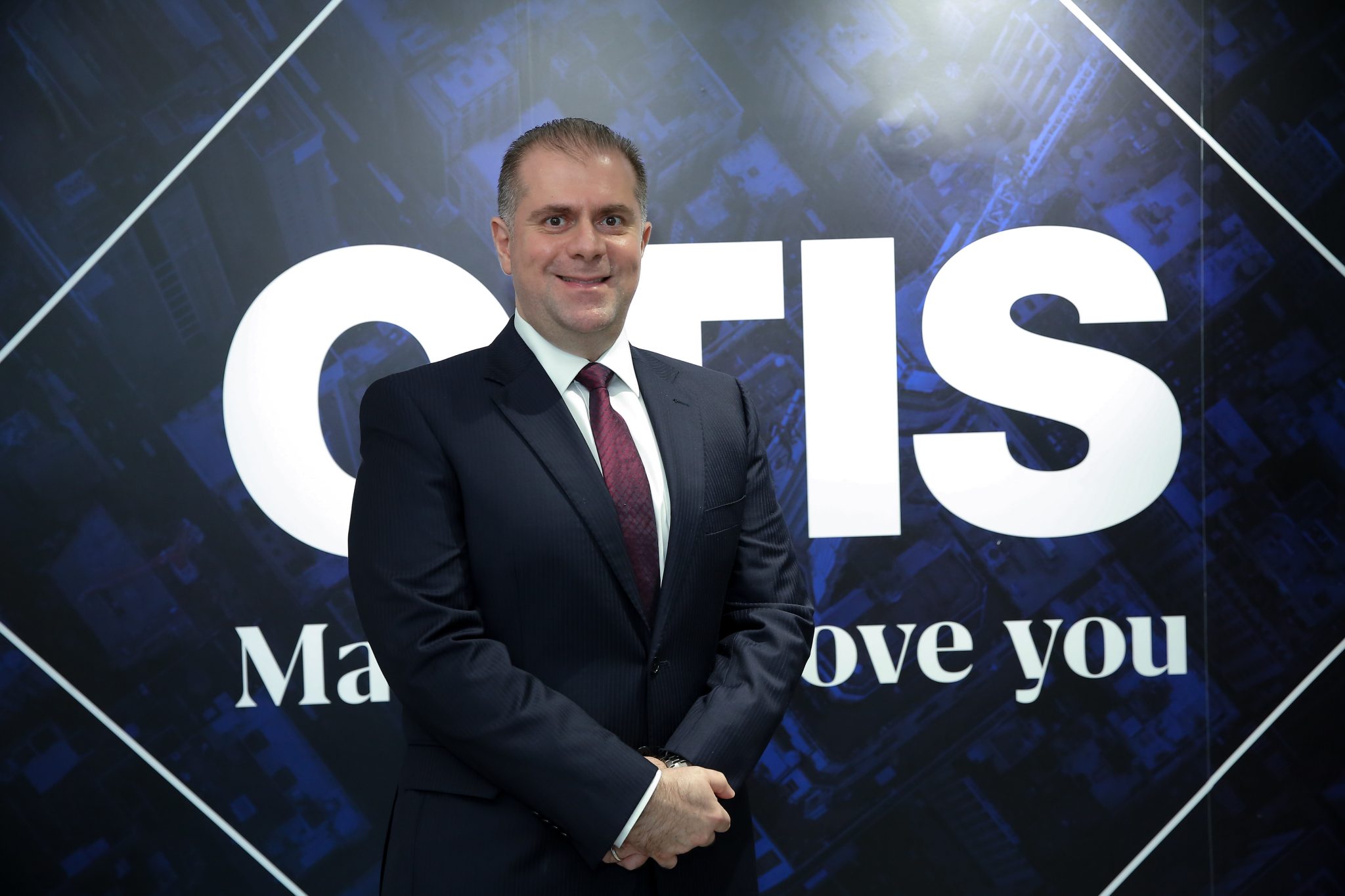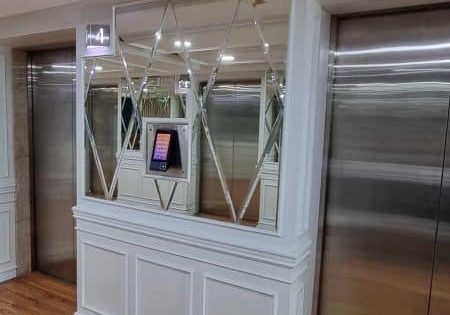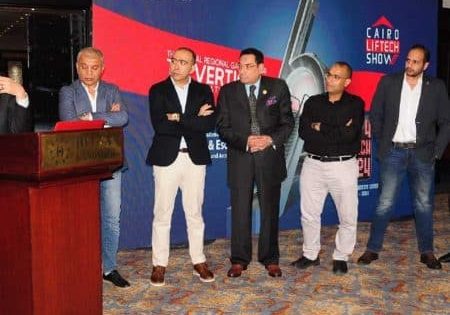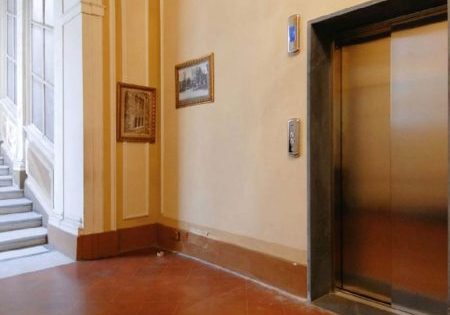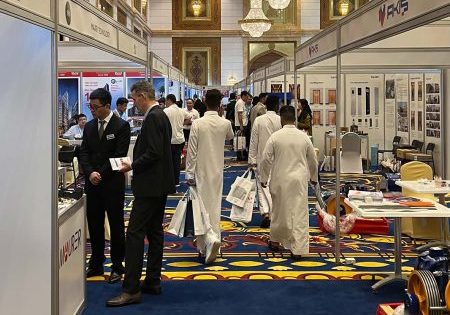A conversation with Otis Gulf MD Mohammed Al Qaisi
A native of Iraq, Eng. Mohammed Al Qaisi (MA) got his start in the heating, ventilation and air conditioning (HVAC) industry as a sales engineer. He eventually moved into leadership positions with United Technologies Corp. (UTC), becoming managing director (MD) of both Carrier — UTC’s HVAC division — and Otis — its VT division — in Qatar. The more he learned about the vertical-transportation (VT) industry, the more he realized he loved it. After all, he observes, it is essential to the growth of great international cities. When Otis spun off from UTC and became independent in spring 2020, Al Qaisi became MD of Otis Gulf. He says he is pleased to focus entirely on VT. The Middle East and the Gulf region (Dubai in particular) are in the midst of a construction boom, with iconic, technologically advanced towers being announced and completed at an unprecedented pace. Otis Gulf plays an integral role by providing much of the VT that makes these buildings possible, and Al Qaisi thrives on being a part of it. He took the time to speak with your author (KW) about the region’s VT market and Otis’ (and his) role in it.
KW: Tell me about yourself.
MA: I am from Iraq. I hold a BSc. in mechanical engineering from the University of Technology in Baghdad. I started my career as a sales engineer for an HVAC company in the U.A.E. I then held various sales and general management positions in the HVAC industry in the Middle East. I joined Otis in 2020 as MD for the Gulf region. I lead a team of more than 900 vertical mobility experts spread across the U.A.E., Kuwait, Qatar and the Middle East territories. We serve customers with challenging projects, from iconic landmarks like the Burj Khalifa to the busiest transportation hubs like Abu Dhabi International Airport.
KW: You spent more than 15 years in the HVAC industry. When and how did you transition to VT, and what has been challenging and rewarding about it?
MA: I have always had a passion for technology that addresses real-world challenges. I started my career in the HVAC industry through a great sales opportunity. A few years later, I was appointed MD for Otis and Carrier in Qatar. In this role, I managed both Carrier and Otis operations, which were both part of UTC then. As I learned more about vertical mobility and got to know the Otis teams, I fell in love with the business. When you think about it, elevators gave rise to the modern cities we know today. We just celebrated the 170th birthday of Otis, and I am really proud to be part of our company’s legacy of innovation, service and, of course, safety.
KW: The Otis Gulf team has handled and is handling a significant number of impressive projects, including One Za’abeel, the Midfield Terminal Building at Abu Dhabi International Airport and SeaWorld Abu Dhabi. Are there any others you would like to highlight?
MA: We take great pride in all the projects for which we provide VT equipment and/or maintenance services. In the Gulf, you can find Otis equipment in numerous hotels, hospitals, residential and commercial buildings, as well as in leading transportation infrastructure. We take equal pride in designing, installing and servicing all our VT projects, no matter their scope or their fame. What matters to us, first and foremost, is our customers’ satisfaction. The projects you mentioned are notable for their size, innovative designs and technological advancements. We are honored to have been selected as their partner. To name just a few additional references, we are equipping Sobha Crest, a premium residential project by Sobha Realty and Creek Edge Tower and Creek Palace by Emaar in Dubai, U.A.E. We are also increasingly upgrading VT equipment in existing buildings. Otis offers a wide range of elevator modernization solutions to integrate the latest Internet of Things (IoT) and predictive analytics into elevators that were built in a different time and era to meet new needs and regulations.
KW: I know One Za’abeel has been completed. At which stage are the Midfield Terminal and SeaWorld projects?
MA: The Midfield Terminal is scheduled to begin operations in early November 2023. SeaWorld opened on May 23.
KW: You have said, “Otis has a rich history of pushing the boundaries of what is possible for an entire industry.” How is this particularly true in the Gulf region?
MA: We have indeed pushed the boundaries of our industry many times during our 170 years of activity. At Otis, we truly believe that the future is now shaped by digitalization. Smart elevators further improve safety, serviceability, reliability, availability and energy efficiency. They also enhance passenger comfort and experience. Several cutting-edge digital technologies are now available to customers in the U.A.E., Kuwait, Qatar, Bahrain and the Kingdom of Saudi Arabia. Our IoT service solution, Otis ONE™, was recently launched in the Gulf. It combines more than 30 years of remote-monitoring experience with the latest in cloud technology, machine learning and the IoT. It provides transparent, real-time monitoring for customers and service professionals and can proactively identify and address potential issues to keep elevators and escalators running, and — in the event of a shutdown — resume service faster. Otis ONE powers eView™, our in-car display screen. During normal operations, the eView display can share information such as news and building updates with passengers for entertaining and comfortable journeys. In the event of an emergency, the screen can turn into a video link between the passengers in the elevator car and Otis experts at the OTISLINE® customer center who will bring additional comfort to passengers, being in eye and ear contact with them, while the issue is sorted out.
We serve customers with challenging projects, from iconic landmarks like the Burj Khalifa to the busiest transportation hubs like Abu Dhabi International Airport.
Predestination technologies such as the Otis Compass® system are also available. These are intelligent systems that control and adjust elevator movements in real time according to traffic. They optimize wait and travel times by grouping passengers according to their destinations (smart grouping). Building managers in the Gulf can also benefit from additional tools such as our Elevator Management System to manage and monitor their equipment.
KW: What distinguishes the Gulf VT market from other global markets?
MA: Real estate projects in the Gulf are known for pushing the boundaries of technology. The Gulf is home to some of the world’s most iconic buildings. These buildings have made Dubai and Abu Dhabi global tourist and business destinations. All of this was made possible by our founder, Elisha Otis, who invented the elevator safety brake in 1853. This invention made elevators safe and spurred a whole new industry that changed the way cities are built and the way the whole world moves.
KW: What are the key ingredients for realizing a successful project such as One Za’abeel?
MA: It takes a village to raise a child. First, we must put our customers and passengers at the center of everything we do. Moving the world safely, efficiently and reliably starts with people. Then come high-quality, state-of-the-art products and services. Each project requires a specific vertical mobility solution to meet its specific needs and objectives. Last but not least, a close partnership with developers, elevator consultants and building owners is essential to manage a project efficiently. It takes a closely connected team to deliver high-performing and well-executed mobility solutions.
KW: It seems like not a week goes by that I do not read about a new luxury tower being launched in Dubai. What is your outlook for the Gulf market in general, and Dubai in particular, over the next five years, and why?
MA: The construction market in the Gulf region, particularly in Dubai, has experienced a significant boom in recent years, and this trend is expected to continue over the next few years. The region has become a global hub for business, tourism and luxury living, attracting investors and developers from around the world. Governments in the Gulf region, including the U.A.E., have been proactive in diversifying their economies, reducing dependence on oil and promoting sectors such as tourism, real estate, finance and technology. This diversification strategy has led to increased investment opportunities and economic stability, driving market growth. The supportive regulatory environment has played a critical role in promoting growth and attracting international players to the region. Dubai, in particular, has positioned itself as a global city and a premier destination for luxury living. The city’s iconic skyline, world-class infrastructure and vibrant lifestyle have made it a magnet for high-net-worth individuals and luxury brands. The continuous development of luxury towers and high-end projects in Dubai reflect the strong demand for upscale real estate and the city’s commitment to maintaining its status as a global luxury destination. The Gulf market, especially Dubai, is expected to continue its growth trajectory over the next few years. The region’s diversification efforts, favorable regulatory environment and status as a luxury destination all contribute to the positive outlook.
KW: What do you find most challenging and rewarding about your present role?
MA: Our shared commitment to operational excellence and customer satisfaction is a great driver. We always innovate to further increase our efficiency, productivity and overall performance to better serve our customers and ensure that our colleagues thrive in their careers at Otis. Seeing the positive impact of our efforts is incredibly rewarding. This sense of progress and accomplishment motivates me and reinforces the value of the work we do. Being part of Otis and helping to drive change and make a difference is highly rewarding. Working with colleagues who share a common vision of giving people freedom to connect in a taller, faster and smarter world creates a great sense of community.
Get more of Elevator World. Sign up for our free e-newsletter.
